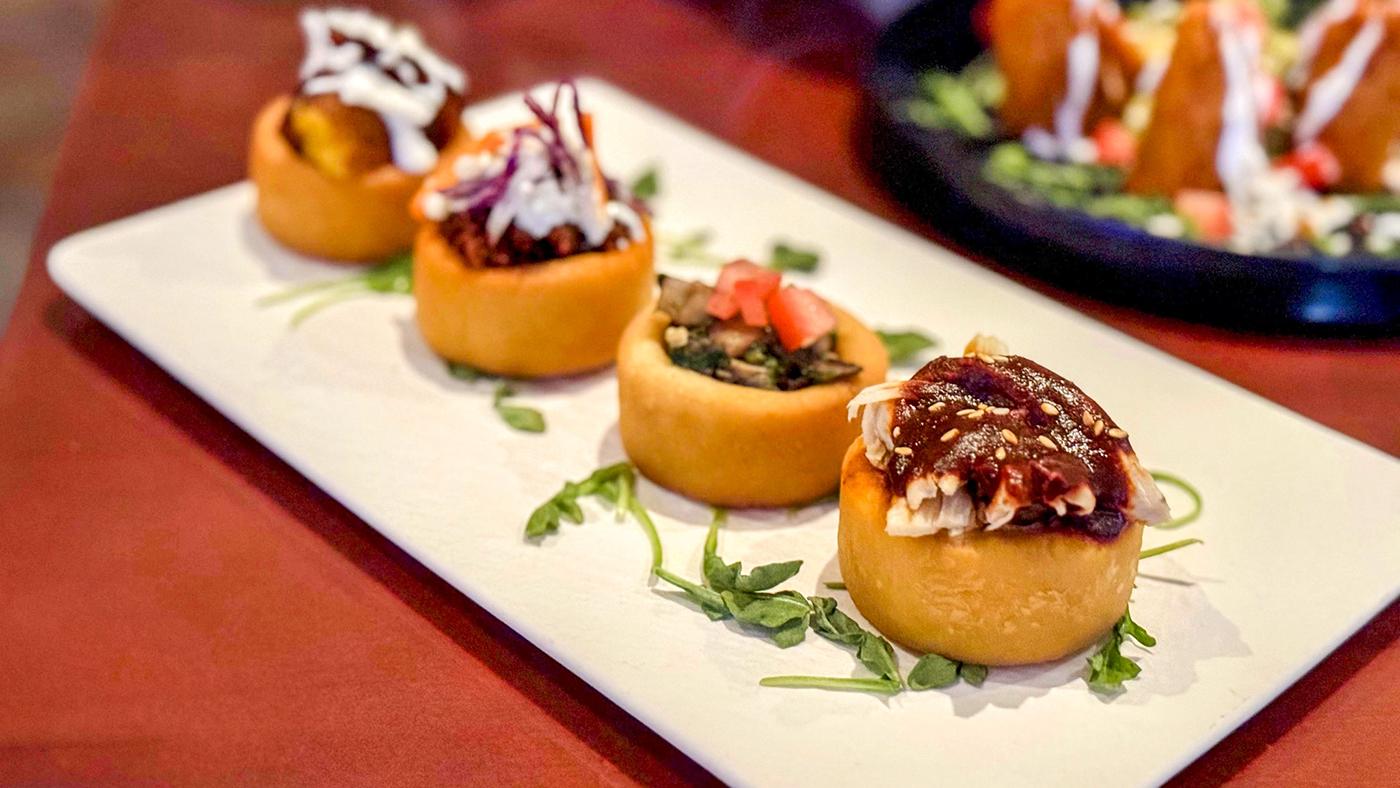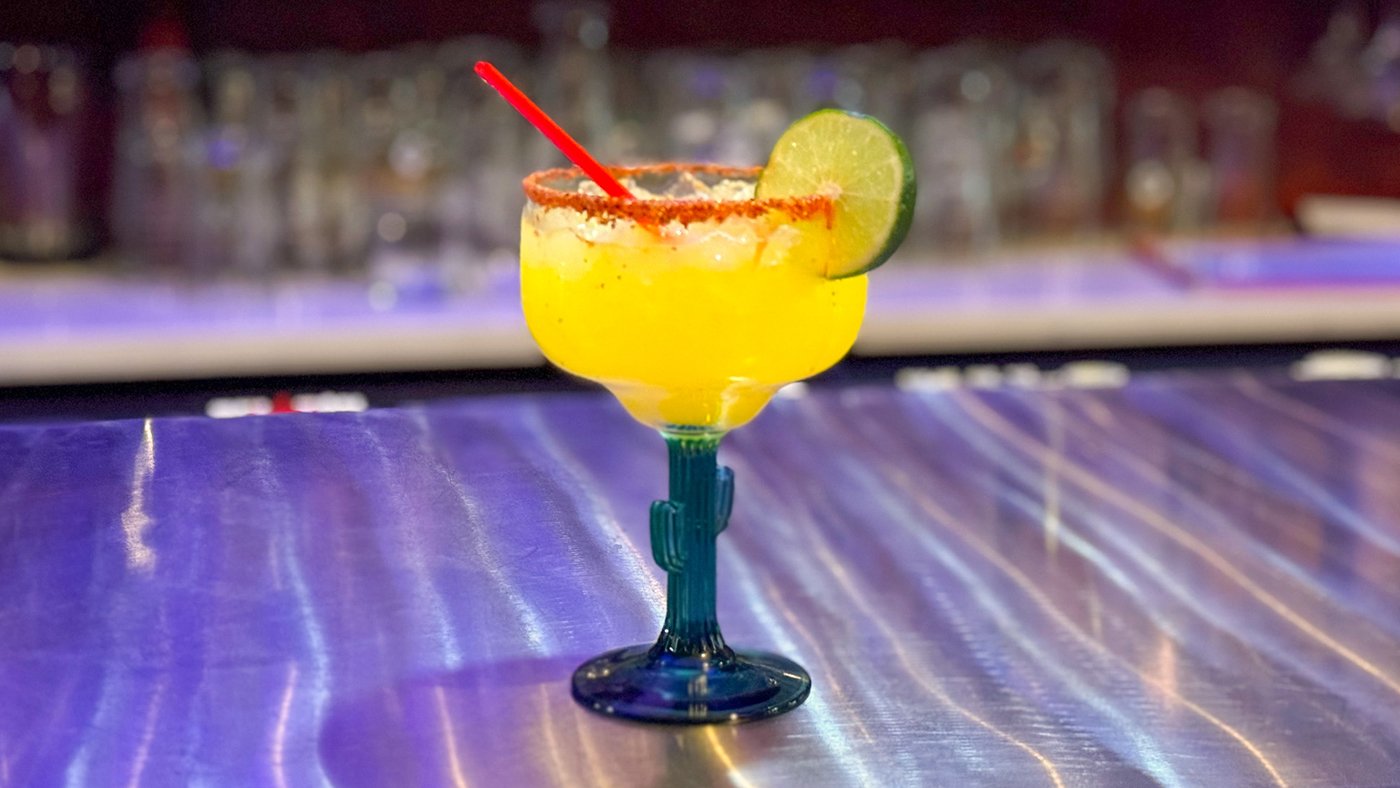El Alebrije Celebrates the Lesser-Known, Magical Regional Specialties of Mexican Cuisine
Maggie Hennessy
January 29, 2024

Get more recipes, food news, and stories by signing up for our Deep Dish newsletter.
When mother-and-son duo Vicente Bustos and Angelica Torres were planning a menu for their regional Mexican restaurant El Alebrije, Bustos was a little louder and more persistent in requesting the inclusion of one dish that he’d grown up eating over any other: enchiladas potosinas.
Native to San Luis Potosí in central Mexico, these masa turnovers are stuffed with housemade tomato salsa and mild queso fresco and lightly fried. Torres stands them upright in a chunky spoonful of guac so they resemble little golden shark fins, then streaks them with crema. With a soft crunch and subtle blend of tang, heat, and richness, they turn the “enchilada” as Americans so often know it on its head – giving us something more delicate that allows each component to shine, stirring our appetites for what’s next.
“I haven’t seen another restaurant that serves them,” says Bustos, the restaurant’s general manager who oversees front-of-house operations. “And they’re delicious.”
In a city with a deep love of Mexican cooking, even in its less traditional forms, and a population comprising almost a third Hispanic or Latino residents, one might wonder what Chicago has yet to unearth about this ancient cuisine. El Alebrije highlights Mexico’s less-understood regional specialties with an artfulness and attention to detail that suggests we still have much to discover – and eat.
“What inspires me at El Alebrije is what I’ve always cooked at home for my family,” says chef de cuisine Torres in Spanish, who has cooked in such professional kitchens as Taco Bueno and Geno Bahena’s nationally acclaimed, bygone Ixcapuzalco Restaurant and studied pastry arts in culinary school. “I was afraid, but my family said try it, do it. Don’t be afraid.”
El Alebrije brightly announces itself on a residential stretch of Kedzie Boulevard in Irving Park, thanks to a colorful mural by local artist Milt Coronado covering its facade, which features a grinning, winged-dog alebrije. The restaurant’s logo and namesake refers to Mexico’s whimsical wood carvings of mythical creatures painted with rich colors and intricate patterns, which represent the magic and beauty of the country. The creatures populate El Alebrije’s back bar and feature in vibrant artwork on the exposed-brick walls of the interior beneath fluttering, multicolored papel picado. A long stainless-steel bar gives way to a warmly lit dining room that peers through an archway into the kitchen.
The restaurant opened in April 2021, more than a year after the family originally intended – no surprise, given the timing. The pandemic hit a week after they’d secured all the necessary permits. They endured a series of false starts as the city seesawed between lockdowns and reopening before they finally debuted with limited capacity. They added brunch service in 2022 to fill a notable void in the neighborhood.
“A lot of people were telling us we were a little crazy because restaurants were closing during that time, and we were opening one,” says Bustos.
The family had never owned a restaurant, but Bustos was steadfast. “I saw so many restaurants that had basically the same menu,” he adds. “The only thing I had in my mind was to put myself in the customer's place. If I’m going out to eat in a Mexican restaurant myself, what do I wish I had?”
A former music major at the Martin Lopez Academy in McHenry County who doesn’t drink alcohol, Bustos had never bartended either, before taking up the formidable task of building out El Alebrije’s agave spirit-heavy bar. He took bartending classes and read books; his parents and staff served as testers for his margaritas with fresh juices, white Russian riffs made with horchata, and sultry Oaxacan negronis.
It’s hard to believe that Bustos didn’t taste the quenching, well-calibrated pineapple mezcal margarita, blending pineapple, smoky, vegetal mezcal, and an uplifting splash of orange liqueur – and rimmed with tangy, brackish Tajín.
The drink makes an excellent companion to sopes caseros, a customer favorite appetizer of masa boats packing four different fillings: caramelized plantains; earthy, herb-flecked mushrooms; black beans and warmly spiced Mexican chorizo; and shredded chicken enrobed in sweet mole negro. The carefully molded pastries are fried in manteca de cerdo, or pork lard, till soft inside with a delicate exterior crunch that shatters like a fabergé egg. Todo con moderación, no?
“Mexican cuisine is immense,” says Torres in Spanish. “Every state has its own moles, its own dishes.”
Torres, who left Mexico in 1995 and has been in Chicago for almost 28 years, is shy. She doesn’t like being the center of attention. But get her on the open road about the native ingredients that colored and flavored her upbringing in Morelos in south-central Mexico, and something ignites within. She talks about harvesting jumiles, or little stink bugs, by hand from little caves before toasting and dusting them with salt and lime for bar snacks. Or stripping spines from cacti to sautée the temperamental succulents before nestling them inside corn tortillas. She mastered moles from a young age, too, learning at her mother’s side.
“A lot of people say Mexican cuisine is the hardest to cook and prepare and work in from scratch,” Bustos says. “I give my mom a lot of props. It’s a lot of spices, chilies, hours – it’s hard! What brings me excitement is when someone doesn’t know what a type of food is, and I can explain it to them.”
El Alebrije’s staff arrive long before opening to start the three moles on offer, which each take three to four hours to make. There’s deep-crimson mole rojo with tomato, peanuts, sesame seeds, and chocolate, as well as the most popular, negro, made with several types of dried chiles, seeds, and nuts that are toasted and charred to lend it telltale, earthy complexity. The lesser-known verde is a specialty of Torres’ home region, with a base of tomatillos, cilantro, anisey epazote, and pepitas. It’s not sieved, which lends grip and earthiness to the subtle, herbaceous sauce. Customers often opt for chicken with green mole, but its nuance works beautifully with duck, which is expertly seared until juicy, its fatty skin crisped into chicharrones that adorn the top.
Torres has a way with pork, too; thinly sliced bone-in chuletas de puerco from Slagel Farms almost melt in the mouth when grilled and set afloat with a hefty pork tamal in velvety guajillo sauce that gets toasty depth from blistered dried chiles.
Just when you think you can’t manage another bite, Bustos wryly deposits a plate of golden crepes, strewn with sticky-sweet plantains and chopped pecans in a pool of cajeta, or goat's milk caramel sauce. It takes four gently simmered hours for this sweet, rich sauce to reach its glossy apex, at which point it’s destined for this single dish. And just like that, our appetites are stirred all over again by the vast culinary magic of Mexico – even though there’s not an ounce more room in our stomachs.









